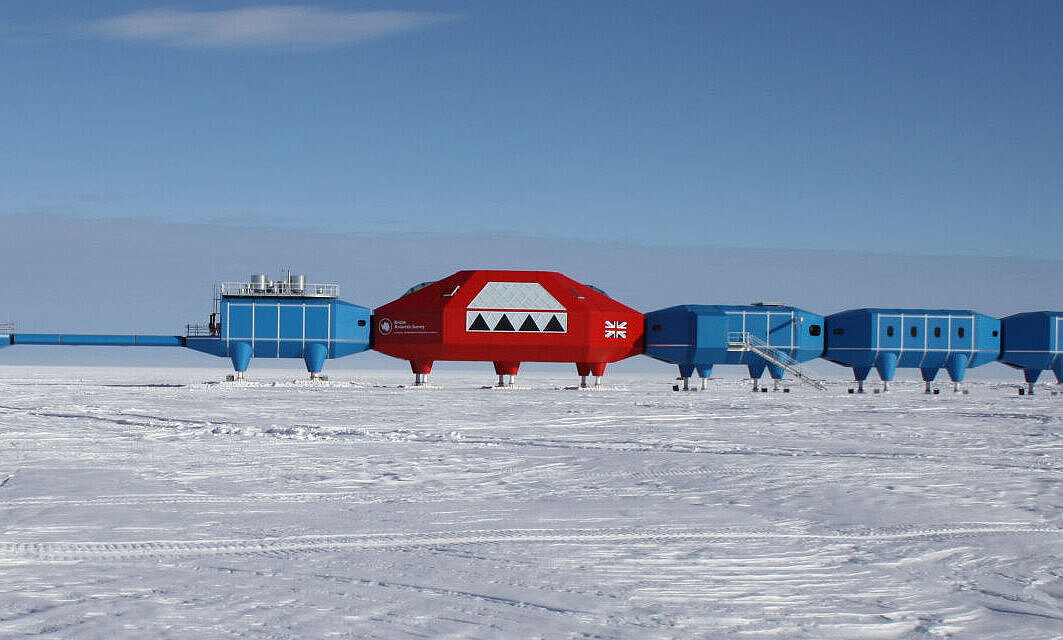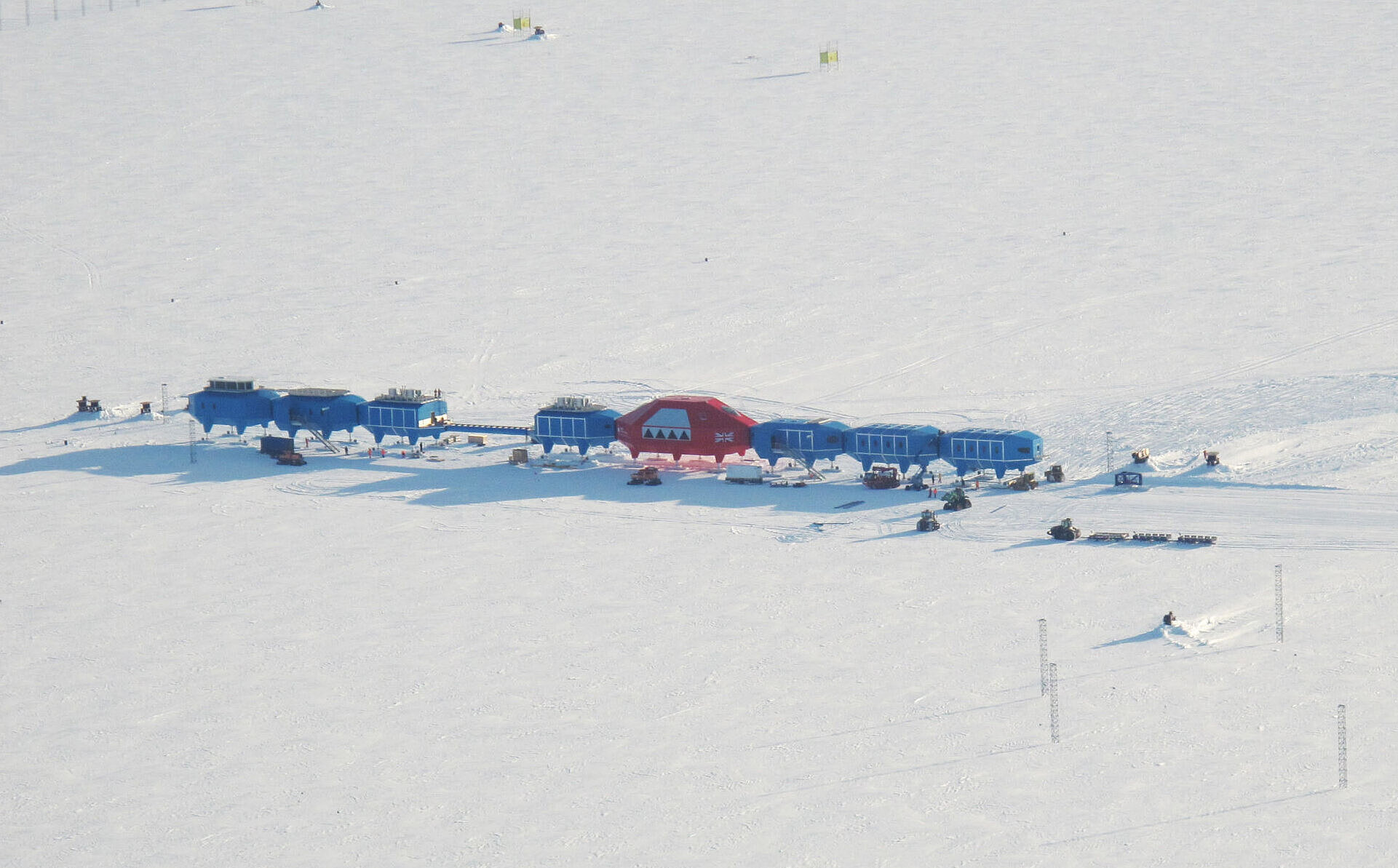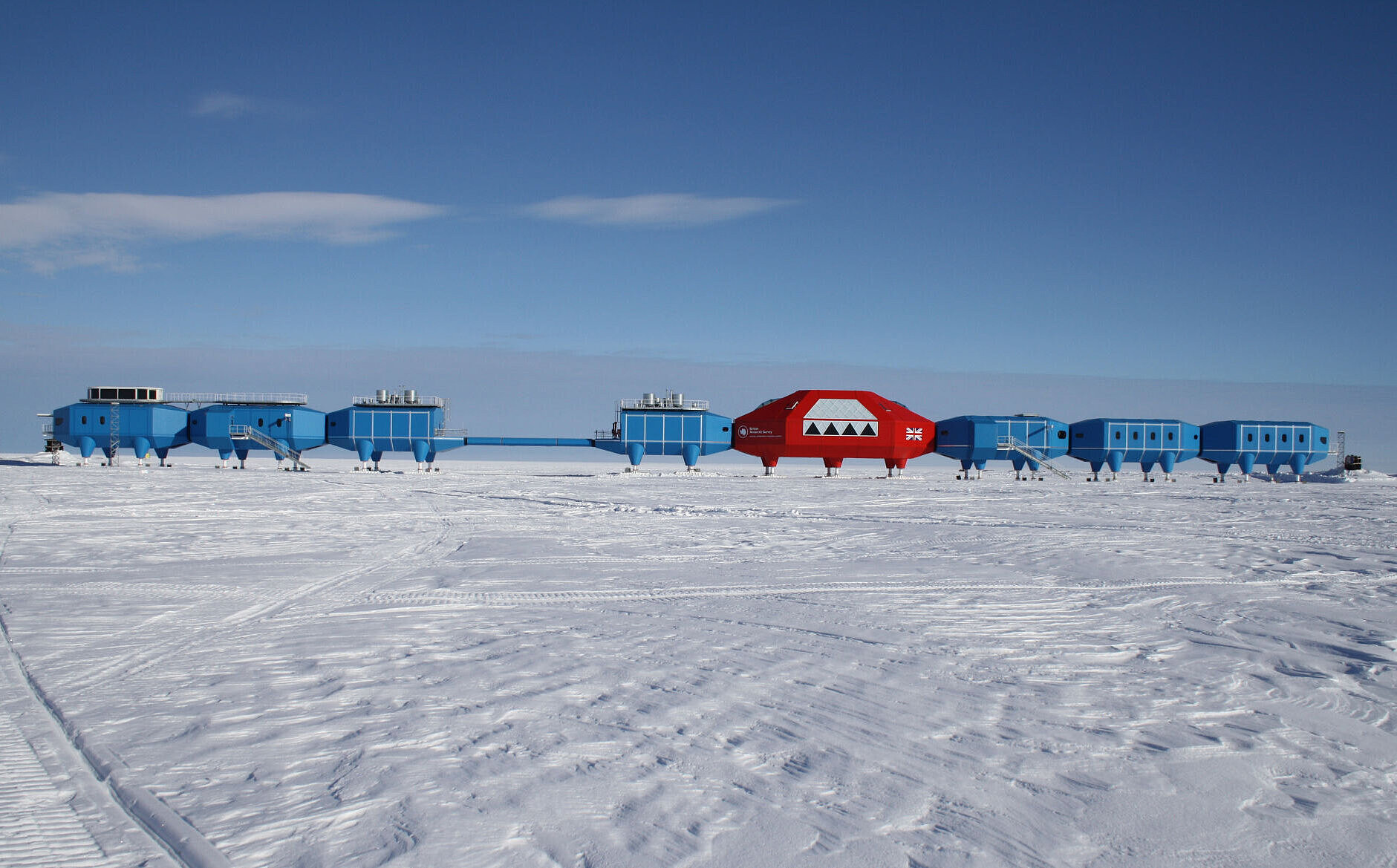Antarctic Research Station Halley VI with Translucent Glazing from OKALUX
Eight years of planning and construction have yielded one of the most extraordinary building projects on our planet: the Halley VI research station of the British Antarctic Survey (BAS). The extreme climatic conditions prevalent in the polar light zone on the Antarctic Brunt ice shelf place very high demands on man and material. To achieve the aim of offering the research team the most comfortable working and living conditions possible under these conditions, OKAGEL functional glass was used in the distinctive red community module of the station: creating a pleasant atmosphere of daylight in the lounge – with the added plus of exceptionally good insulation values.
In cooperation with the Engineering Office of Faber Maunsell, the British Hugh Broughton Architects Office developed a very flexible concept for Halley VI: the individual modular bodies are connected through short corridors and kept above snow level on hydraulic legs. In addition, the hydraulic legs are mounted on oversized skies to enable quick reaction to breaks or changes in the ice: the modules can be disconnected and pulled to a new location one by one. This significantly increases the expected lifetime of the new station.
The two-storey, red community module stands out in the white vastness of the Antarctic like a glowing entity and offers the team of the research station a place to eat, read, confer and enjoy other leisure activities. The high degree of user comfort in the interior results, for the main part, from the soft daylight evenly diffused into the leisure area through the generous glazing of OKAGEL insulating panes. The advantages of the translucent insulating material come into their own under the extreme conditions of the Antarctic Halley Bay. The nanoporous aerogel is not only lightweight it also offers a high level of heat insulation, noise protection and translucency. OKAGEL exhibits excellent Ug-values which, in contrast to conventional insulating glazing filled with air or gas, are independent from the installation angle. For example, a double glazing with 60 mm aerogel in the cavity has an Ug-value under 0.3 W(m²K).
Despite the prevailing inhospitable climatic conditions, the insulating material ensures cozy warmth in the station while diffusing soft daylight to the interior. Thanks to OKAGEL, the Halley team can enjoy a higher level of comfort in the leisure area.




